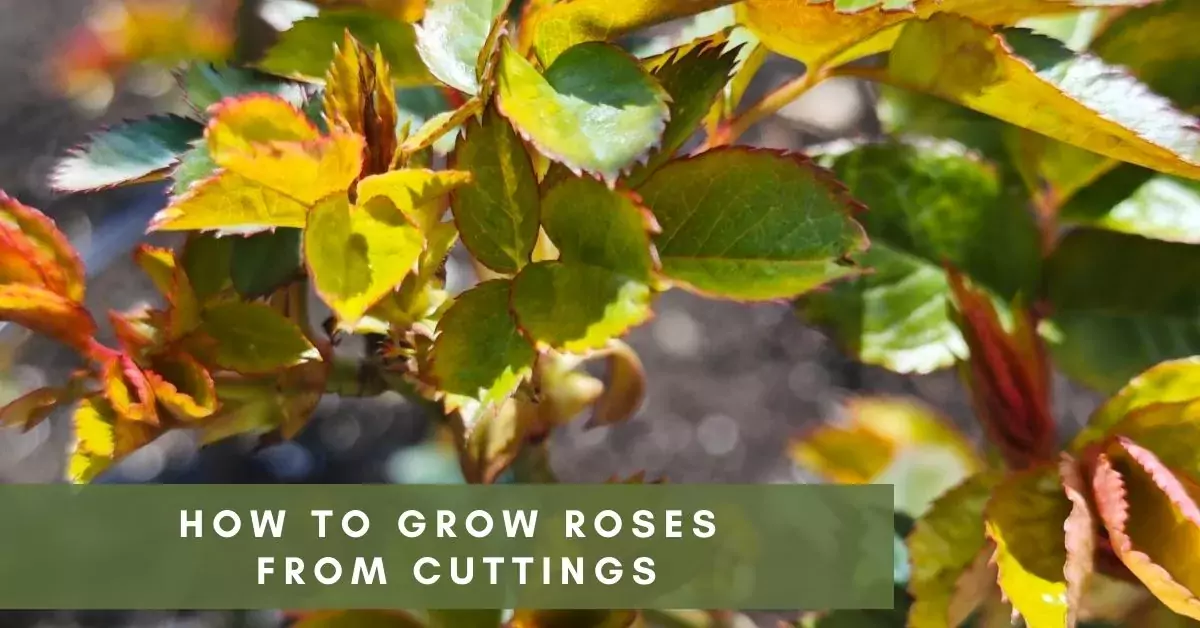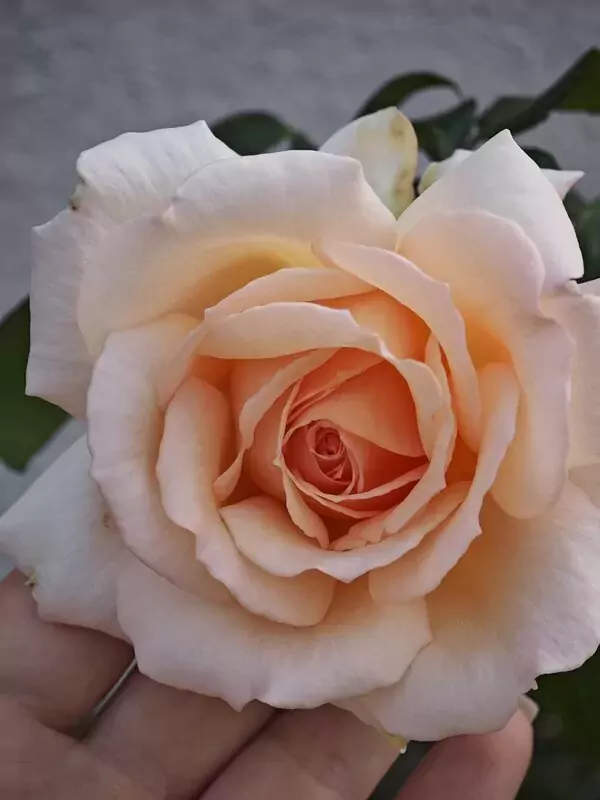Roses symbolize love and beauty, gracing gardens with vibrant colors and sweet fragrances. While buying rose bushes from a nursery is common, there’s something special about growing them from cuttings. Not only does it allow you to propagate your favorite varieties, but it’s also a rewarding and cost-effective way to expand your garden. Imagine cultivating these enchanting blooms from humble cuttings, nurturing them into magnificent rose bushes. As a gardener passionate about propagating roses, I follow a tried-and-true method for rooting cuttings that yields fantastic results. Here’s my step-by-step process:
How to Start a Rose from a Cutting
Step 1 - Crafting the Perfect Cuttings
Starting a rose from a cutting is surprisingly simple, requiring just a few basic steps. Begin by selecting a healthy stem from a mature rose plant, preferably one that recently bloomed. Cut a section of the stem about 6 to 8 inches long using sharp, clean pruning shears. Ensure the cutting has at least three leaf nodes. With precision akin to an artist’s brushstroke, we cut the stems at a gentle angle of 45 degrees, ensuring each cutting boasts 3-4 buds, promising a bountiful future.
Next, remove any flowers, buds, or leaves from the lower half of the cutting. This helps divert energy to root development rather than sustaining unnecessary foliage. Dip the cut end of the stem into a rooting hormone to encourage faster rooting, although it’s not strictly necessary (more on this later).
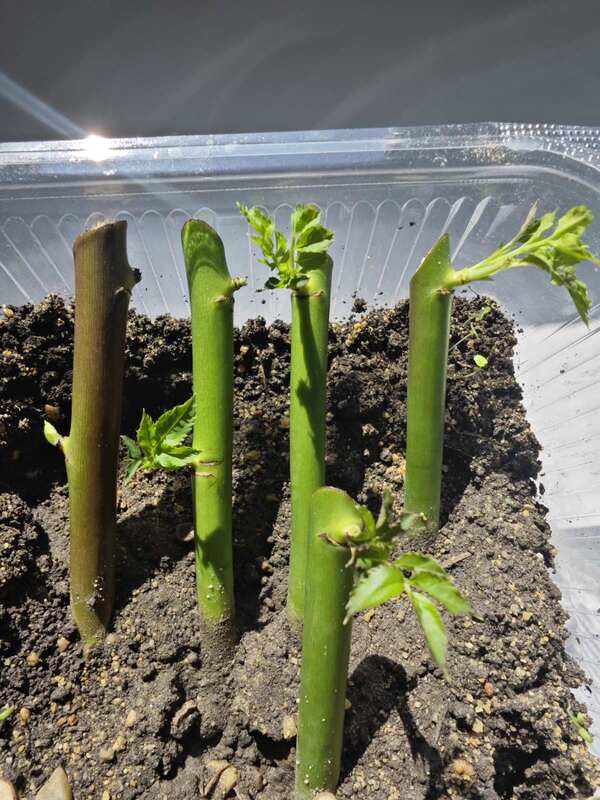
Step 2 - Nurturing with Nature's Bounty
I prepare a rooting medium of sand, peat, and fertile soil. This blend provides the perfect balance of drainage and nutrients essential for root formation. Before planting, I dip the base of each cutting into a solution of honey and water, harnessing honey’s natural rooting properties to encourage robust root growth. Alternatively, a commercial rooting agent from the store can be used for this purpose.
Step 3: Plant rose cutting.
With the cuttings primed and ready, I carefully insert them into the soil at an angle, ensuring they’re firmly planted but not overly compacted. To create a conducive environment for germination, I cover the cuttings with a jar or place them in a plastic container, maintaining optimal humidity levels for successful rooting. Periodically, I open the lid of the container to allow for air circulation, preventing excess moisture buildup.
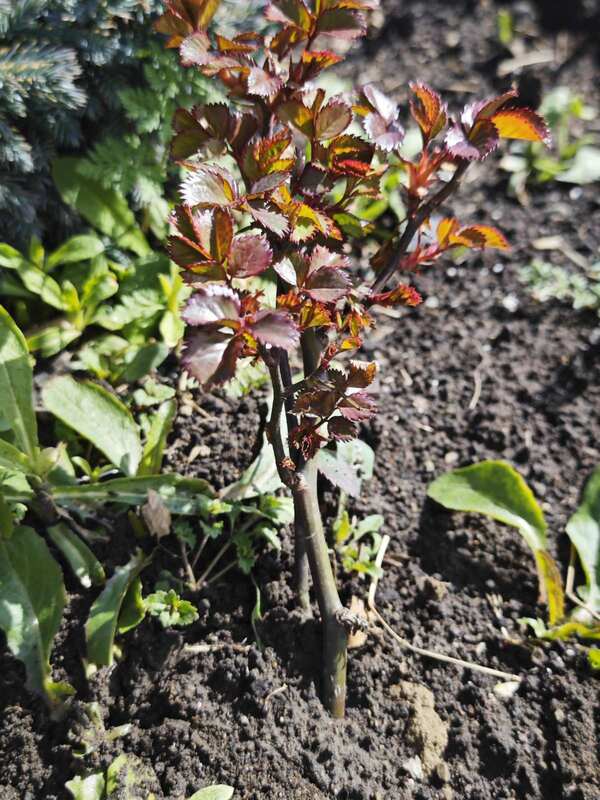
Step 4 - Embracing the Journey: From Jar to Garden
As the cuttings begin to sprout leaves and develop branches, it’s a sign that rooting has taken place. This process typically takes about 1-1.5 months, depending on environmental factors and the health of the cuttings. Once the young roses have established themselves and show signs of adaptation, I transplant them to their permanent location in the garden or a suitable pot.
Step 5 - Witnessing Nature's Miracles: Sprouting and Thriving
During the initial transplant, I protect the young plants by covering them with a jar to shield them from harsh conditions and promote healthy growth. Once I’m confident they’ve acclimated to their new surroundings, I remove the jar and care for them like any other rose plant.
Can You Root Rose Cuttings in Water?
Absolutely. Rooting rose cuttings in water is a popular method that’s both effective and straightforward. After preparing your cutting, as mentioned earlier, please place it in a clean glass or jar filled with water. Position the container in a bright, indirect light location, changing the water every few days to prevent stagnation and bacterial growth.
Over time, you’ll notice roots forming from the leaf nodes. Once the roots are a few inches long and well-developed, you can transplant the cutting into the soil following the earlier steps.
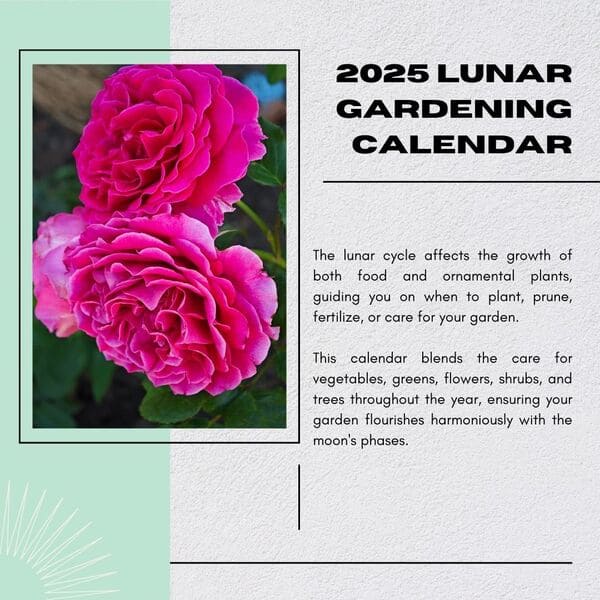
Get Your Free Lunar Gardener's Calendar 2025!
Join the Lunar Gardening Revolution! Subscribe now to receive our exclusive Free Lunar Gardener’s Calendar for 2025. Harness the power of the moon to optimize your planting, nurturing, and harvesting.
How to Grow Roses from Cuttings Without Rooting Hormone
While rooting hormones can expedite rooting, successfully propagating roses from cuttings is not always necessary. If you prefer a more natural approach, there are DIY homemade rooting hormone recipes you can try. A straightforward recipe involves using honey, which contains natural rooting agents. Mix one part honey with two parts boiled water, allow the solution to cool, and then use it to dip your cuttings before planting.
Cultivating roses from cuttings is rewarding. It offers the opportunity to replicate beloved varieties and enrich your garden without straining your budget. Whether you root your cuttings in water or soil, with or without rooting hormone, the key lies in patience, care, and attention to detail. With these simple yet effective techniques, you’ll soon be rewarded with a flourishing garden filled with beautiful, fragrant roses.

